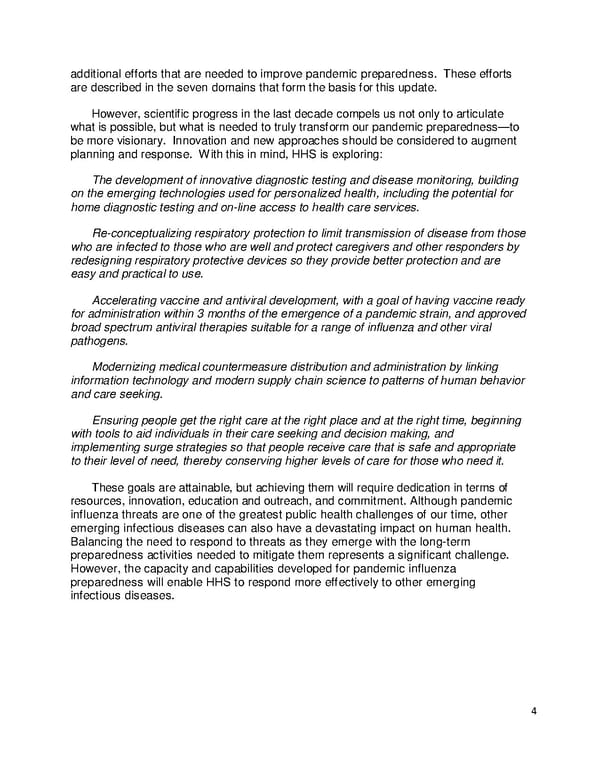additional efforts that are needed to improve pandemic preparedness. These efforts are described in the seven domains that form the basis for this update. However, scientific progress in the last decade compels us not only to articulate what is possible, but what is needed to truly transform our pandemic preparedness—to be more visionary. Innovation and new approaches should be considered to augment planning and response. With this in mind, HHS is exploring: The development of innovative diagnostic testing and disease monitoring, building on the emerging technologies used for personalized health, including the potential for home diagnostic testing and on-line access to health care services. Re-conceptualizing respiratory protection to limit transmission of disease from those who are infected to those who are well and protect caregivers and other responders by redesigning respiratory protective devices so they provide better protection and are easy and practical to use. Accelerating vaccine and antiviral development, with a goal of having vaccine ready for administration within 3 months of the emergence of a pandemic strain, and approved broad spectrum antiviral therapies suitable for a range of influenza and other viral pathogens. Modernizing medical countermeasure distribution and administration by linking information technology and modern supply chain science to patterns of human behavior and care seeking. Ensuring people get the right care at the right place and at the right time, beginning with tools to aid individuals in their care seeking and decision making, and implementing surge strategies so that people receive care that is safe and appropriate to their level of need, thereby conserving higher levels of care for those who need it. These goals are attainable, but achieving them will require dedication in terms of resources, innovation, education and outreach, and commitment. Although pandemic influenza threats are one of the greatest public health challenges of our time, other emerging infectious diseases can also have a devastating impact on human health. Balancing the need to respond to threats as they emerge with the long-term preparedness activities needed to mitigate them represents a significant challenge. However, the capacity and capabilities developed for pandemic influenza preparedness will enable HHS to respond more effectively to other emerging infectious diseases. 4
 Pandemic Influenza Plan Page 3 Page 5
Pandemic Influenza Plan Page 3 Page 5